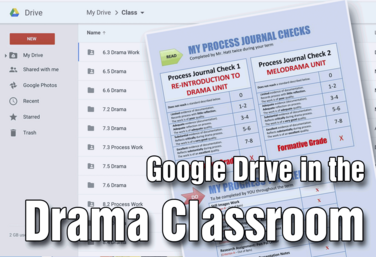Courses

Google Drive in the Drama Classroom
by Josh Hatt
Lesson Plans
Expectations and Goals - End of Year
by Lindsay Price
Expectations and Goals - Beginning of Year
by Lindsay Price
Emergency Lesson Plan: Theatre Reflection
by Lindsay Price
Rejection through Movement and Character
by Lindsay Price
Flocking/Group Movement
by Karen Loftus
Writing a Reflective Review
by Lindsay Price
Writing a Review: Introduction
by Lindsay Price
Looking Back and Looking Forward
by Kerry Hishon
The History of Blackface in Theatre
by Quincy Young
Close Reading Analysis of It's Always Loud in the Balcony
by Drama Teacher Academy
The Black Arts Movement
by Quincy Young